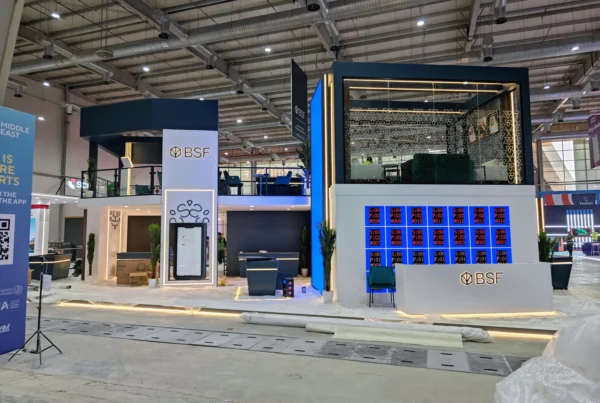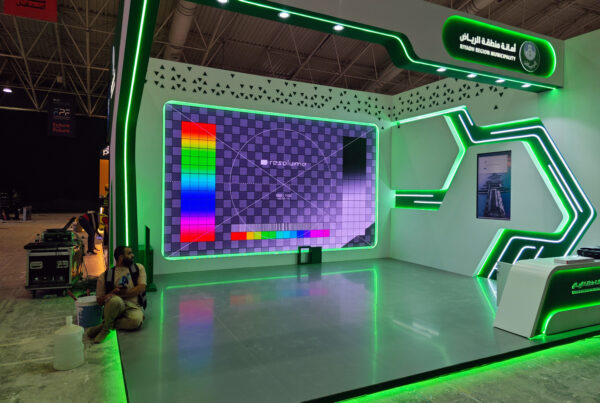1. A Deadline, a Dialogue and a Very Big Table
Mid-April 2025. Our team at Chameleon Interactive received a late-night call: the organising committee of the Arab European Cities Dialogue 2025 (AECD 2025) wanted an interactive centre-piece for its inaugural forum in Riyadh. The brief sounded simple “a large multi-user table that recognises physical tokens and launches city-themed content.” The catch? The forum was locked for 11–13 May 2025, giving us exactly three weeks to go from whiteboard sketch to a white-glove demo seen by more than 60 mayors and urban-development ministers.
AECD’s theme, “Bridging Cities, Building Futures,” demanded a tactile, collaborative installation. Guests needed to drop a city token on the surface and watch location-specific stories animated in a playful style yet underpinned by serious photoreal data—come to life. It sounded like an R&D sprint that normally takes months. We had twenty-one calendar days.
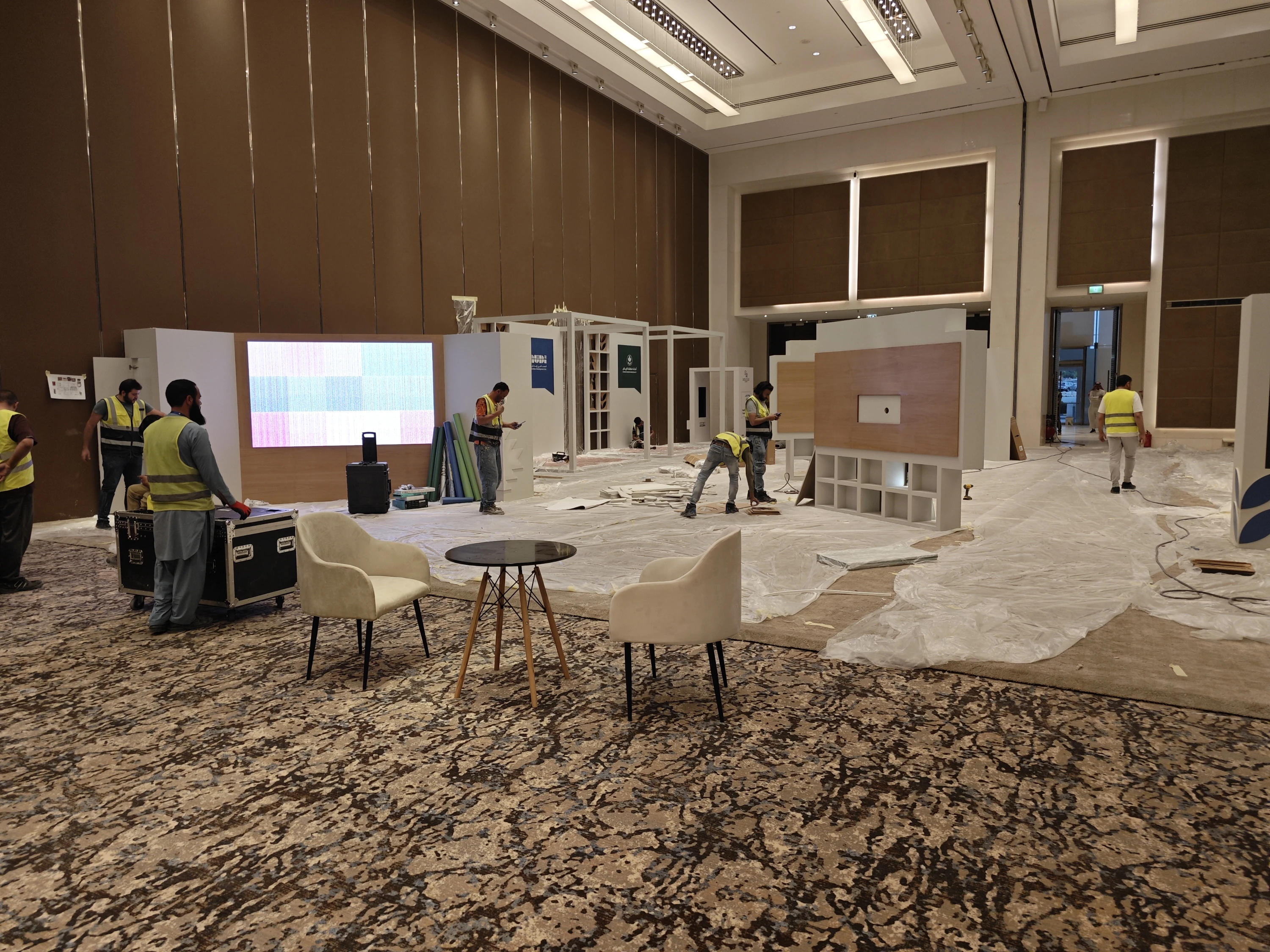
2. Why We Chose a PCAP Screen (and Why That’s Difficult)
Our fastest option for the physical surface was a standard projected-capacitive (PCAP) touch display – the same technology inside every modern phone. PCAP is rugged, bright, and available off-the-shelf in 55-inch-plus sizes, perfect for conference freight. But it comes with one brutal limitation: the glass only registers conductive touches (human fingers or special styli) – it can’t see random objects the way overhead cameras or IR frames do.
Object recognition on PCAP therefore required us to hack the physics. Our solution: machine-milled aluminium tokens with conductive bases that mimic a giant fingertip but do so in repeatable, uniquely identifiable patterns. Every token’s underside was machined into a three-prong “signature” shape; by reading the geometry of the capacitance blob, our firmware could tell Riyadh from Granada in milliseconds.
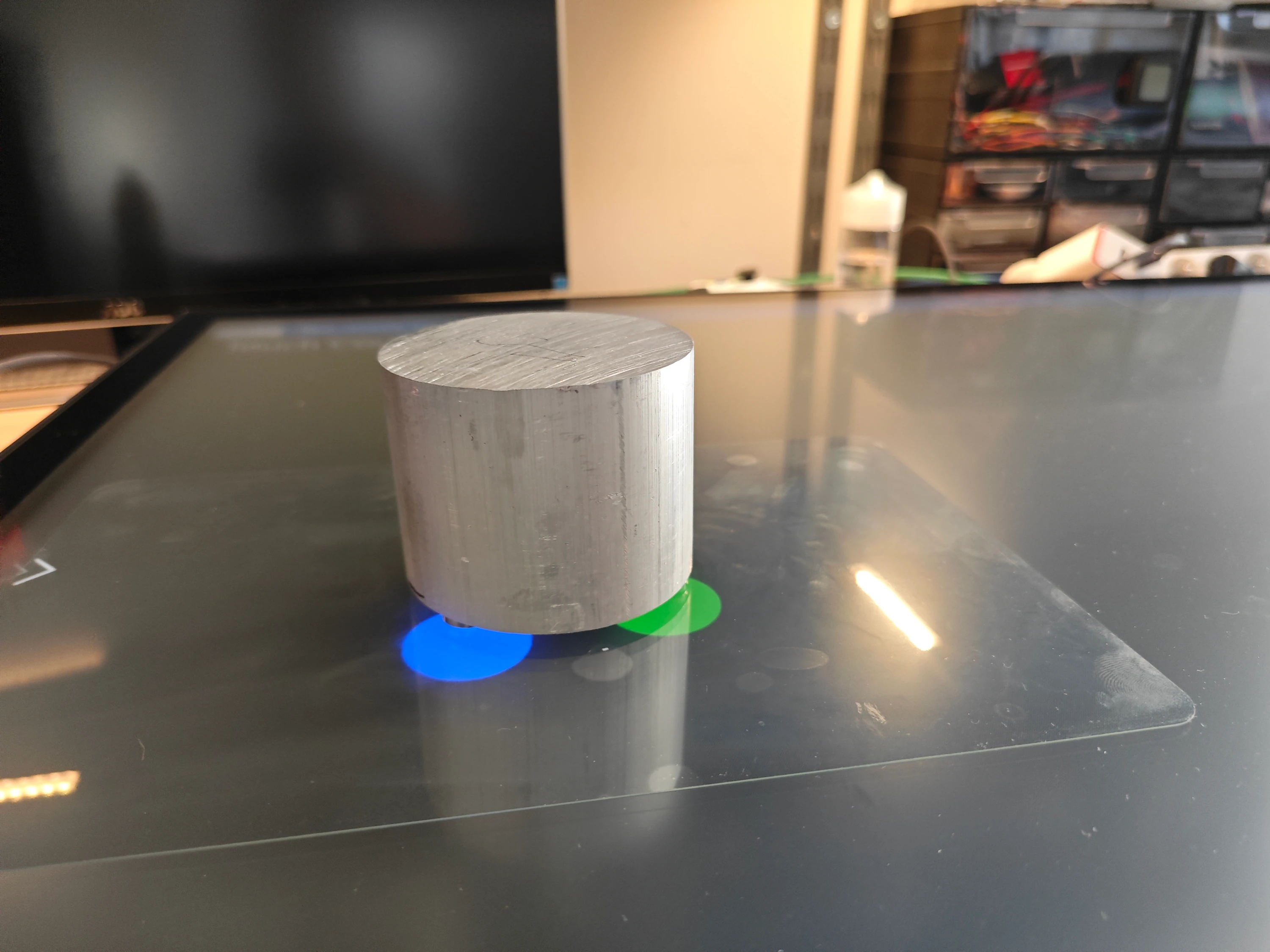
3. Three Weeks of “Days and Nights”
We split the sprint into parallel tracks:
| Week | Hardware & Fabrication | Software & Content |
|---|---|---|
| Week 1 | Order 55″ PCAP screen, design token CAD, secure aluminium billets. | Prototype signal-processing code in C++/Qt. |
| Week 2 | CNC-mill 16 × 60 mm aluminium blocks, sandblast, anodise; add conductive neoprene pads. | Build UE5 scene framework; import city models from our Riyadh Digital Twin for photoreal shots. |
| Week 3 | Mount screen, integrate embedded PC, stress-test token recognition 24/7. | Render 24 cartoon-style clips, overlay UE5 reflections, finalise trigger logic. |
Studio lights burned well past midnight. Developers slept near the test rig; CNC operators ran double shifts to keep chips flying. By day 15 we had the first successful multi-token demo: three cities on the glass simultaneously, zero ghost touches.
4. Milling Magic – Turning Aluminium Billets into Interactive Tokens
Choosing aluminium was half science, half logistics. It’s light enough for one-hand placement, conducts electricity beautifully, and machines fast. We bought 6061-T6 billets, rough-cut them on a three-axis CNC, then:
-
Profile cut the disc and brand-mark the city name.
-
Face mill both sides for mirror-flat capacitance contact.
-
Sandblast to a satin finish that hides fingerprints under LED down-lights.
-
Clear-anodise for scratch resistance.
-
Bond a 0.3 mm conductive neoprene ring to the underside.
Each token’s signal fingerprint—three capacitive “peaks” placed 120° apart was unique enough for the firmware to resolve even if two tokens overlapped slightly, a critical feature in a crowded networking session.
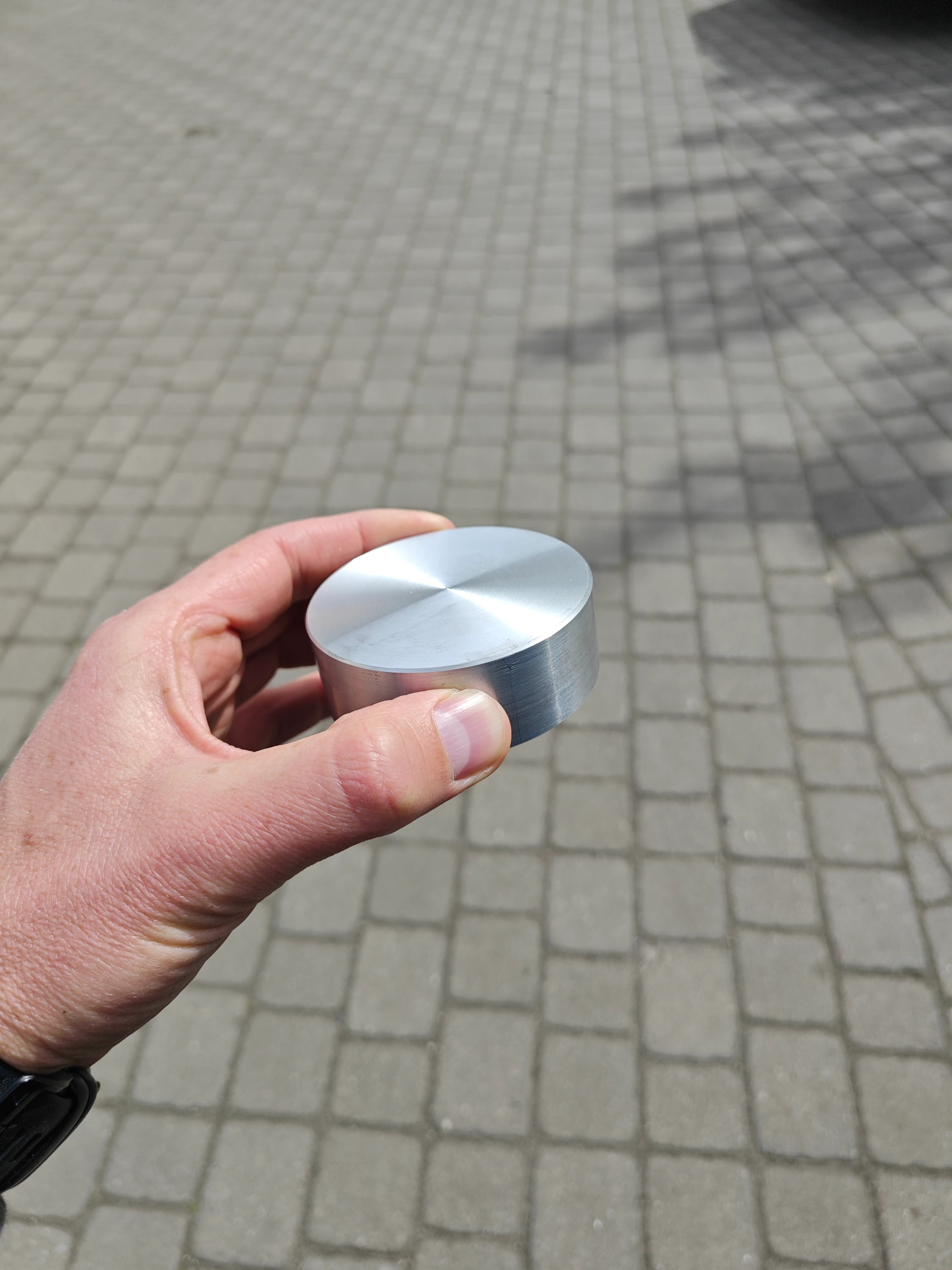
5. Code That Listens to Aluminium
Projected-capacitive panels provide a 2-D heat-map of capacitance deltas at roughly 100 Hz. Our middleware, written in C++ with a Qt UI layer, filtered noise, measured blob geometry, and matched results against a token library. Because AECD would be packed with laptop chargers, we added a real-time FFT noise filter to kill 50/60 Hz mains interference – an idea borrowed from Synaptics app notes on capacitive sensing.
Once the blob resolved, the engine fired a WebSocket event into Unreal Engine 5, which in turn loaded the proper level sequence think of it as a Netflix episode instantly summoned by a coin drop.
6. Twenty-Four Animations, Two Art Styles, One Engine
Content had to be both playful (to invite experimentation) and credible (for heads of state). We divided assets into:
-
Cartoon Segments – 15-second cel-shaded loops starring animated mascots explaining sustainability, mobility, or cultural heritage – easy to digest in a busy hall.
-
Photoreal Inserts – 5-second UE5 shots stitched in for “wow” moments: reflective skyscrapers, night-time drone pans, and volumetric clouds.
By re-using geometry from our Riyadh digital-twin project, we shaved almost a week off modelling time. Artists could focus on rigging fun characters while environment lighters maximised ray-traced reflections.
7. Stress-Testing: 72 Hours of Non-Stop Token Drops
With hardware assembled, we ran a three-day torture test: six tokens placed in random sequences, 20 seconds apart. No misreads. The only failure—an anodised edge too sharp was fixed with a quick chamfer pass.
On-site in Riyadh, the table survived eight straight hours of networking chaos on day one, with dignitaries stacking tokens, shifting them mid-animation, even sliding them across the glass. Our capacitance-pattern tracking held firm; not a single reboot required.
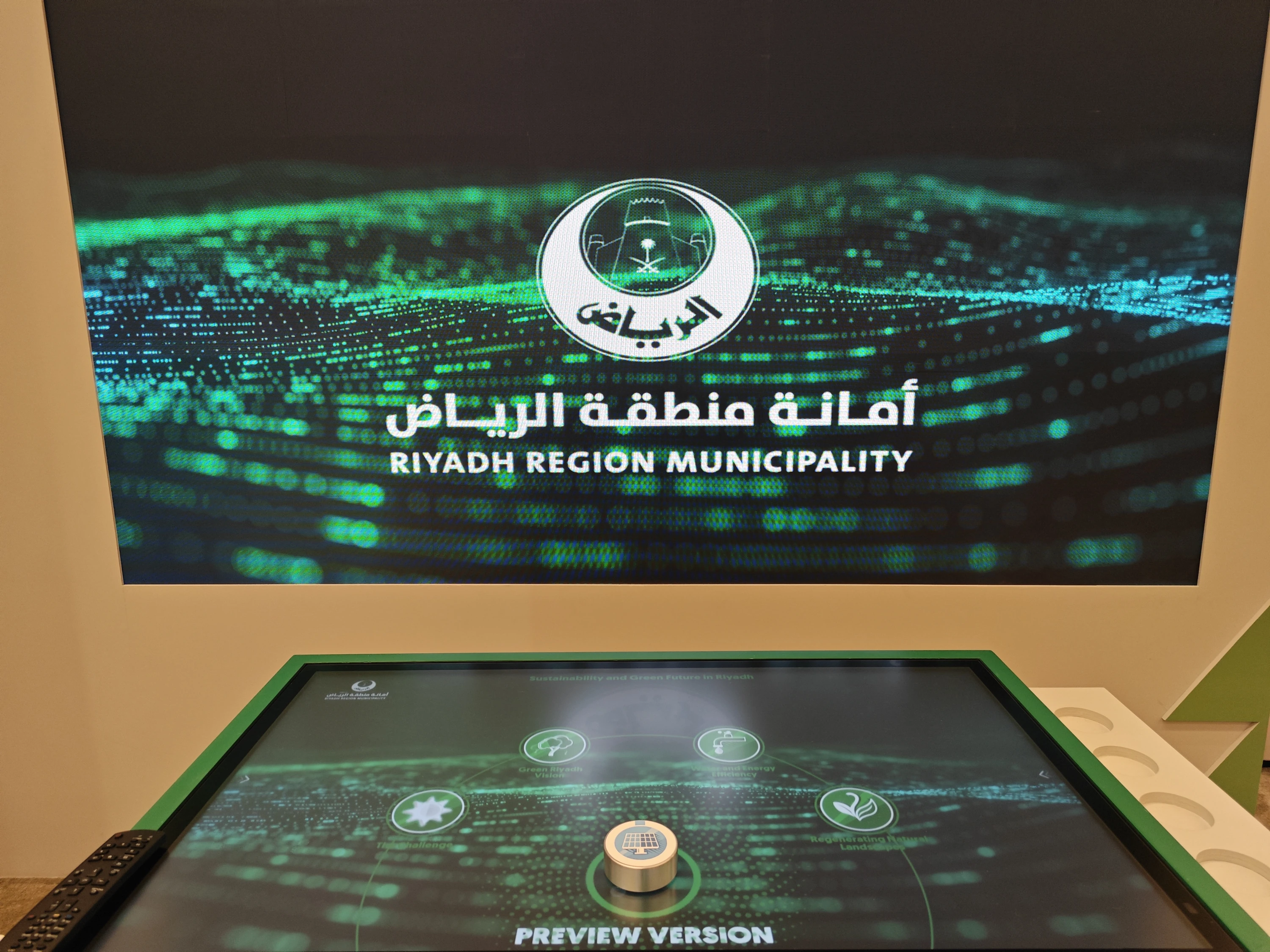
8. AECD 2025 in Context
Held at Riyadh’s Granada Convention Centre, AECD 2025 gathered urban leaders from Barcelona to Muscat under the banner “Bridging Cities, Building Futures.” Sessions tackled smart mobility, digital twins, and climate resilience. Partners included the Arab Urban Development Institute (AUDI), UN ESCWA, and the World Bank.
The interactive table sat beside the main plenary hall, offering instant city spotlights between sessions. Granada’s mayor dropped her token and watched a stylised Alhambra sequence; Katowice’s delegation saw a photoreal skyline segue into a cartoon coal-to-culture story. Multiple mayors asked how quickly the table format could scale to larger regional forums exactly the ice-breaker we hoped for.
9. Lessons Learned (and Where We Go Next)
-
Standard hardware can surprise you. PCAP screens aren’t meant for object recognition, yet smart software and conductive craftwork unlocked new UX with zero custom glass.
-
Asset re-use accelerates miracles. Without the Riyadh digital twin in our vault, twenty-four animations in three weeks would have been fantasy.
-
Crunch is a teacher. Our days-and-nights sprint revealed shortcuts like FFT noise suppression and neoprene damping that now feed a reusable “token toolkit” for retail and museum tables.
The success at AECD hasn’t just expanded our portfolio; it has sparked R&D into dynamic token personalisation (3-D printing variable capacitance patterns) and edge-AI lead scoring tied to token interactions concepts we first explored for our gamified lead-capture booths.
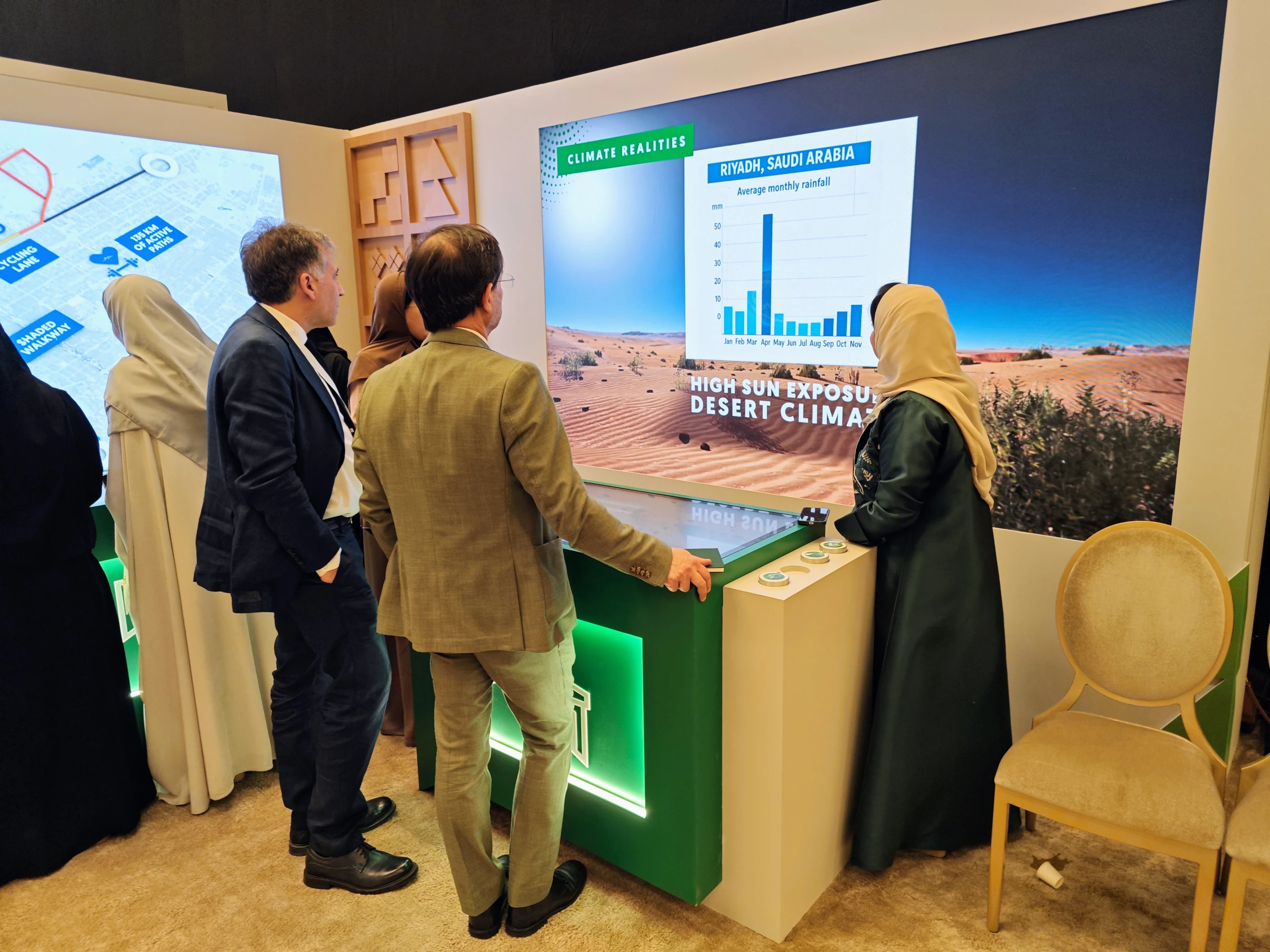
10. Final Word
Three weeks. One standard touch screen. A handful of aluminium discs. The AECD 2025 table proves that with the right mix of creativity, sleepless determination, and a dash of physics hacking, even impossible timelines can turn into polished show-stoppers.
Need an interactive centre-piece that balances craft, code, and storytelling whether for a city forum, a museum, or a flagship retail floor? We’d love to talk. Reach out here and let’s turn your tight deadline into an unforgettable experience.

